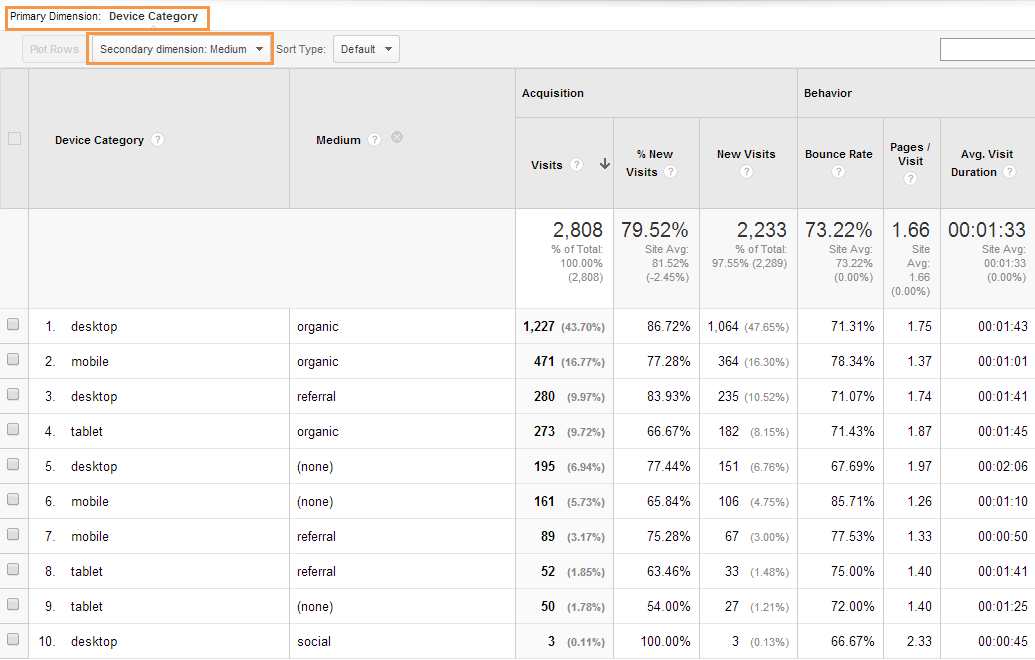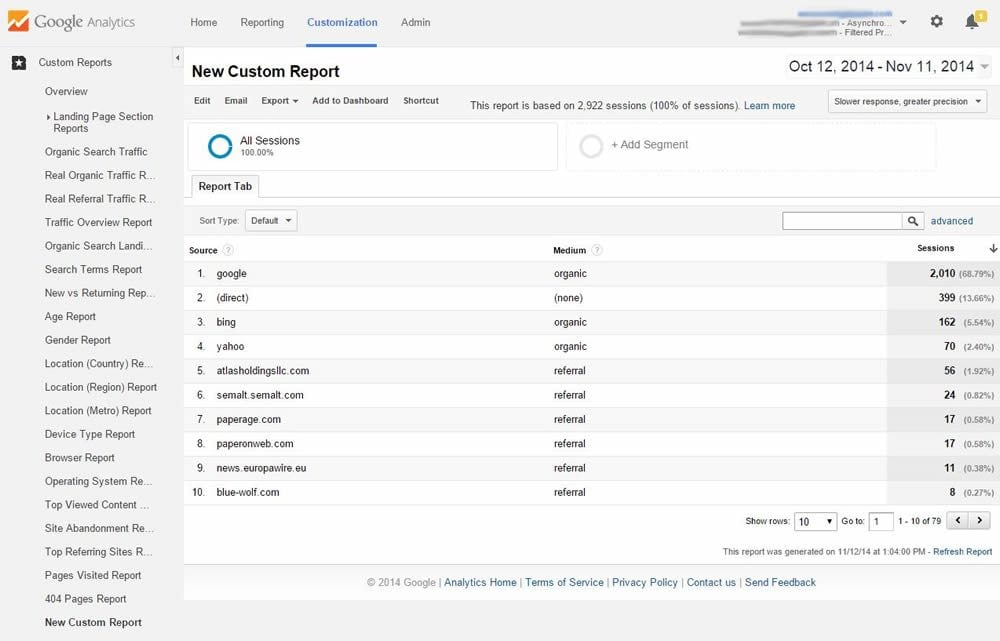Secondary Dimension in Google Analytics: Ideal Practices and Tips
Wiki Article
Gain Detailed Point Of Views With Second Dimension in Google Analytics
Second dimensions in Google Analytics act as a powerful device for improving the deepness of understandings acquired from data evaluation. Stay tuned to find just how second measurements can revolutionize your data evaluation and drive informed decision-making in the electronic world.Comprehending Second Dimensions in GA
The idea of additional dimensions in Google Analytics boosts information evaluation by offering additional insights right into main metrics. Secondary measurements allow individuals to dig much deeper into their information by including an additional layer of details to the key information being examined. By including secondary dimensions, customers can segment and compare data across various measurements, such as web traffic sources, user devices, geographical areas, and more. This added degree of granularity allows a much more detailed understanding of user habits and web site efficiency.Understanding how to effectively make use of additional measurements in Google Analytics is necessary for extracting valuable understandings from the data accumulated. By choosing the appropriate additional measurements to complement primary metrics, customers can uncover patterns, patterns, and relationships that may have otherwise gone unnoticed. This deeper degree of evaluation can lead to more educated decision-making and the optimization of electronic advertising approaches to enhance overall efficiency.
Advantages of Using Additional Dimensions
Discovering the advantages intrinsic in leveraging second measurements within Google Analytics illuminates the deepness of insights offered for improving information evaluation. By incorporating additional dimensions, individuals can obtain an extra comprehensive understanding of their main data metrics. One of the essential advantages is the capability to section and filter information, enabling for an extra in-depth analysis of specific measurements such as traffic sources, user actions, or geographical area - Secondary Dimension in Google Analytics. When looking at the data in seclusion., this division helps in identifying patterns, trends, and correlations that might not be evident.In addition, additional dimensions enable individuals to compare and contrast various information points within the very same record, providing a more all natural sight of site performance. This comparative analysis can clarify the effectiveness of marketing campaigns, content engagement, or user demographics. Furthermore, making use of additional dimensions can assist in identifying outliers or abnormalities that might require additional investigation.
Fundamentally, leveraging second dimensions in Google Analytics offers a powerful tool for extracting important insights and optimizing data-driven decision-making processes.
Applying Additional Measurements Efficiently
To properly execute secondary measurements in Google Analytics, strategizing the choice and application of these added data layers is vital for taking full advantage of the depth of understandings stemmed from analytics records. When selecting second measurements, consider the certain objectives of your analysis to make sure the picked measurements align with the details needed to respond to pertinent concerns. It's vital to prioritize relevance over amount, picking dimensions that complement the key dimension and supply purposeful context.Implementing additional dimensions efficiently involves utilizing them to discover patterns, patterns, and connections that might not be evident when evaluating information exclusively based on the main dimension. By integrating secondary measurements attentively, you can enhance the granularity of your analysis and gain much deeper insights into individual actions, material performance, and various other essential metrics within Google Analytics.
Analyzing Data With Second Dimensions
Using additional measurements in data analysis supplies a nuanced viewpoint that my review here uncovers detailed partnerships and patterns within Google Analytics reports. By including secondary measurements together with key dimensions, experts can delve deeper into the data to remove important understandings. This strategy enables the identification of relationships that might not be promptly noticeable when assessing data only based on main measurements.When evaluating information with second dimensions in Google Analytics, it is vital to think about the details metrics or dimensions that will provide the most significant context for the key measurement being examined. Matching the main dimension of 'web traffic resource' with additional dimensions such as 'gadget classification' or 'touchdown web page' can supply an extra thorough understanding of customer behavior and choices.
In addition, the capacity to section data using additional dimensions allows for a more granular examination of customer communications, assisting in the optimization of marketing strategies, website efficiency, and total user experience. By leveraging secondary measurements properly, businesses can make enlightened choices based on a detailed evaluation of their Google Analytics information.
Ideal Practices for Additional Dimensions
When executing secondary measurements in Google Analytics, accuracy in choosing relevant metrics is paramount for acquiring workable insights from the data evaluation process. Among the most effective methods for utilizing second dimensions effectively is to straighten them with your main measurement to gain an extra detailed understanding of your website or campaign efficiency. As an example, if your key dimension is 'Source/Medium,' coupling it with secondary measurements like 'Device Classification' or 'Landing Page' can offer understandings into just how different tools or landing web pages effect traffic from various More hints resources.
Frequently try out various mixes of second and key measurements can aid you uncover brand-new correlations and fads within your data, enabling you to optimize your methods and boost total performance (Secondary Dimension in Google Analytics). By adhering to these ideal techniques, you can utilize second measurements in Google Analytics effectively to get much deeper understandings and make data-driven choices that favorably affect your company

Final Thought
To conclude, second dimensions in Google Analytics offer a useful possibility to obtain deeper understandings right into primary data metrics. By adding a secondary dimension to records, businesses can uncover connections, patterns, and patterns that may not be promptly noticeable, leading to a much more detailed understanding of individual habits and interactions on a site. Applying secondary measurements properly and assessing information with them can aid organizations make data-driven choices and maximize their on the internet performance.By integrating secondary measurements, customers can section and compare data throughout various dimensions, such as web traffic sources, customer tools, geographical places, and extra. Executing second measurements effectively entails utilizing them to reveal patterns, patterns, and correlations that may not be obvious when assessing data solely based on the key measurement. By including secondary dimensions alongside key dimensions, experts can dig deeper into the information to draw out valuable understandings. One of the finest techniques for utilizing secondary measurements efficiently is to align them with your key dimension browse around this web-site to acquire an extra detailed understanding of your website or project performance. If your key measurement is 'Source/Medium,' matching it with second dimensions like 'Tool Category' or 'Touchdown Page' can provide insights right into how various devices or touchdown pages impact website traffic from different resources.
Report this wiki page